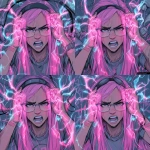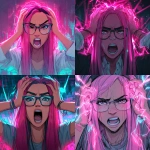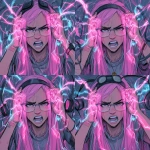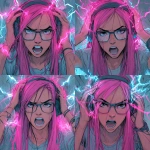Explore the Best AI Image Gallery

Painted Pixels and Pulsing Patterns: AI Images in Marketing
The marketing landscape is constantly evolving, driven by technological advancements that reshape how brands connect with their audiences. One of the most exciting and disruptive developments in recent years has been the emergence of artificial intelligence (AI) image generation. This technology empowers marketers to create stunning visuals with unprecedented speed and efficiency, blurring the lines between human creativity and machine ingenuity.
A New Canvas for Creative Expression
AI image generators, fueled by sophisticated algorithms and vast datasets, can produce a wide range of visual content, from photorealistic imagery to abstract art. Marketers are leveraging this technology to:
- Generate eye-catching social media graphics: AI can quickly create compelling visuals tailored to specific platforms and campaigns.
- Design custom product mockups: Imagine showcasing your latest offerings in realistic, virtual settings without the need for expensive photography sessions.
- Craft unique marketing materials: AI can personalize brochures, flyers, and other collateral, enhancing brand engagement.
The Impact on the Creative Industry
While AI image generation presents exciting opportunities, it also raises questions about its impact on the creative industry.
- Democratization of Creativity: AI tools can empower individuals with limited design experience to create professional-quality visuals, fostering a more inclusive creative landscape.
- Evolving Roles for Designers: Human designers may shift from purely execution-focused roles to strategists and concept developers, collaborating with AI to bring their visions to life.
- Copyright and Ownership: The question of ownership and intellectual property rights surrounding AI-generated content is still being debated and defined.
Ethical Considerations
As with any powerful technology, AI image generation requires careful consideration of its ethical implications:
- Bias and Representation: AI algorithms can perpetuate existing biases present in the training data, leading to unfair or stereotypical representations. It is crucial to ensure diverse and representative datasets to mitigate these risks.
- Misinformation and Manipulation: The ability to create realistic fake images raises concerns about the spread of misinformation and the potential for manipulation. It is essential to develop safeguards and promote media literacy to address these challenges.
- Transparency and Accountability: Users should be aware when they are interacting with AI-generated content and understand the limitations of the technology. Clear labeling and transparency are crucial for building trust.
Future Trends
The field of AI image generation is rapidly evolving, with exciting trends on the horizon:
- More Realistic and Stylized Output: AI models will continue to improve in their ability to create hyperrealistic and artistic visuals, pushing the boundaries of whats possible.
- Personalized Content Generation: Imagine AI tailoring marketing materials to individual preferences and demographics, creating truly personalized experiences.
- Integration with Other Technologies: AI image generation will likely be integrated with augmented reality (AR), virtual reality (VR), and other emerging technologies, creating immersive and interactive brand experiences.
AI image generation is poised to revolutionize the marketing landscape, offering unprecedented creative possibilities while presenting important ethical challenges. By embracing responsible development and deployment, we can harness the power of AI to enhance creativity, personalize experiences, and drive meaningful connections between brands and their audiences.

](https://images.ai-img.art/thumbnails/150/fe996254fcb758c1365f3a22783ee6112ed5e34579deb401de674b06938efb2a.webp)

](https://images.ai-img.art/thumbnails/150/985b7bf314caa205e59a2c973e979ce77cf5b24ca39799fffe2e30ea7c79ef07.webp)














](https://images.ai-img.art/thumbnails/150/4c5bdb0a0a1f761a911521333b9e3463c885aa247b42d1d311a97f2aa2c513d2.webp)









](https://images.ai-img.art/thumbnails/150/4c67c727683a835917441757b71ace563950f9178fa4826e09a55cfb092ac715.webp)






](https://images.ai-img.art/thumbnails/150/b94716d4b88da3e1ec3ab12162616a52ff5698251ac791ddf8478649889a0f47.webp)



](https://images.ai-img.art/thumbnails/150/469bffae134ea97666025052588e76bb4dd4b6b98c4888cfd7873929a73156ff.webp)
